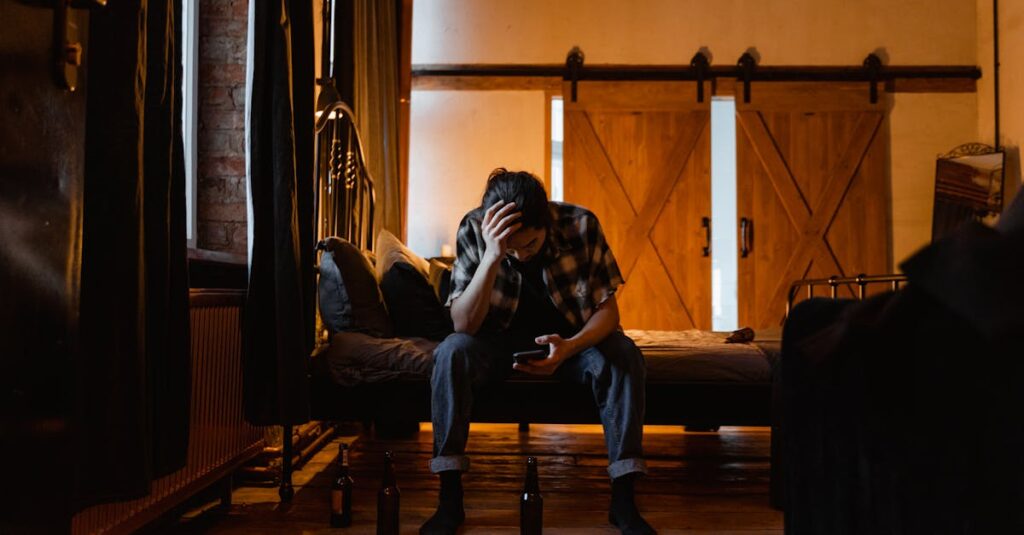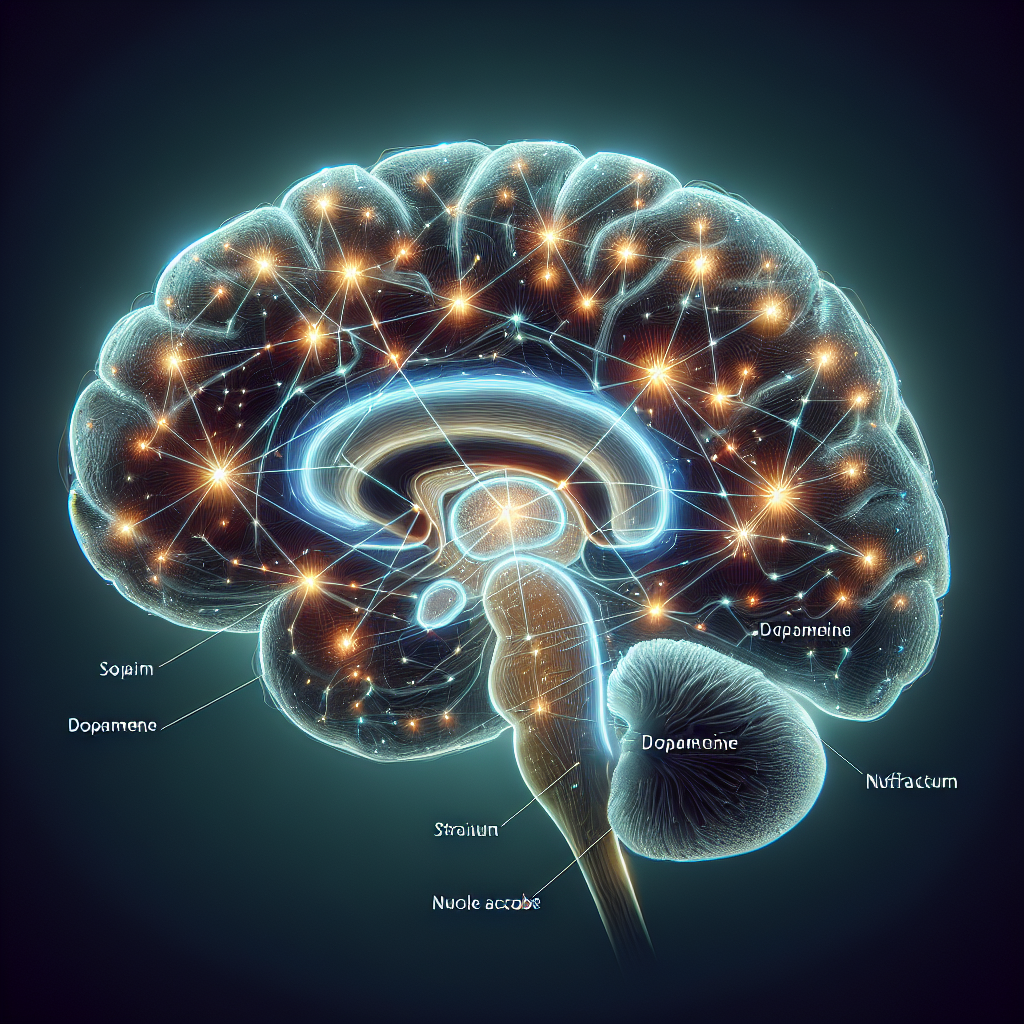Your cart is currently empty!
Social Media Addiction Statistics 2025: Is Your Phone Killing Your Dreams?


The numbers tell a shocking story: 33.19 million Americans – about 10% of our population – struggle with social media addiction. This problem extends far beyond US borders, and 56.8% of people worldwide actively participate on these platforms.
Science explains why social media hooks us so deeply. Research shows these platforms trigger the same reward pathways in our brains as drug addiction. This leads people to check their phones compulsively, especially when you have users between 18-22 years old. This age group represents 40% of all Americans addicted to social media.
Let’s get into the latest social media addiction statistics and see how these platforms affect different groups of people. We’ll look at their impact on improved productivity and personal goals. The science behind why breaking free from endless scrolling feels so hard will also become clear.
The Alarming Rise of Social Media Addiction in 2025

Image Source: DemandSage
Social media addiction has reached alarming levels in 2025. These platforms evolved from basic communication tools into digital worlds that millions cannot escape. Users now face serious mental health issues and reduced productivity as they struggle to disconnect.
Current global addiction rates
Around 210 million people worldwide battle social media addiction. The numbers paint a stark picture – 4.69% of all social media users globally show addiction symptoms. One in 20 users display behaviors that psychologists identify as addiction. They compulsively check their accounts, feel withdrawal when disconnected, and keep using despite negative effects.
The United States faces its own crisis with 33.19 million Americans – about 10% of the population – addicted to social media. American adults show awareness of this problem, as 30% admit they’re addicted.
Age groups tell a troubling story. Young adults between 18-22 lead with 40% self-reported addiction. The numbers drop with age – 37% for 23-38 year-olds, 26% for those 38-54, and 21% in the 55-64 bracket.
Gender differences also emerge clearly. Worldwide, 6% of men and 32% of women struggle with social media addiction. The US shows a smaller but still notable gap: 26% of men versus 34% of women.
How addiction rates have changed since 2020
Social media addiction has exploded since 2020. The early 2000s saw just 5% of Americans using social media. Usage jumped to 72% by 2021, with addiction rates following suit.
Social media platforms now reach 5.07 billion users worldwide – 62.6% of Earth’s population. User numbers grow by 5.4% yearly, adding 259 million new users last year alone.
Screen time statistics reveal an unsettling trend. Teen’s daily screen time jumped from 7 hours and 22 minutes in 2019 to 8 hours and 39 minutes in 2021. Heavy users now spend up to 9 hours daily – 37% of their waking hours.
Most addictive platforms in 2025
Users report these platforms as most addictive in 2025:
- TikTok: Users rank it as the hardest platform to quit
- YouTube: With 3.07 billion users, it ranks second in addiction potential
- Facebook: This veteran platform still hooks users, with one in 8 saying it hurts their life quality
These platforms share design elements that maximize engagement through psychological triggers. Their algorithms keep users scrolling by showing emotionally triggering content. They also use variable reward systems like slot machines do, creating dopamine loops that hook users.
The effects run deep: 26.1% of addicted users can’t sleep well, 38.4% strain their eyes, and 25.5% feel increased anger. A whopping 64% of users feel anxious or stressed when logging off. These numbers show social media’s powerful psychological hold on its users.
How Your Phone Steals Your Productive Hours
Your smartphone isn’t just a tool—it’s a productivity vampire that silently drains your most valuable resource: time. Social media habits take a measurable toll on your work output, going way beyond simple addiction.
Average daily time spent on social media
People spend about 143 minutes each day scrolling through social media—that’s 2 hours and 24 minutes daily. This shows a small drop from early 2022’s average of 2 hours and 29 minutes. Teen usage is nowhere near these numbers, as they spend 4.8 hours daily on social media apps.
Here’s how much time people spend on each platform:
- TikTok grabs 56 minutes and 22 seconds of daily attention
- Facebook and its messaging apps take 35 minutes daily
- Instagram users dedicate 29.2 minutes per day
- YouTube captures 29.6 minutes daily
Americans check their phones 159 times a day—that’s nine glances every waking hour. This relaxed habit comes with real risks to your productivity.
The productivity cost of constant checking
Phone interruptions create a “switch-cost effect” that lasts way longer than just checking notifications. Your brain needs time to get back in the zone after each check. Research shows students who got messages did 20% worse on cognitive tasks. Your brain loses 20% of its processing power with constant interruptions.
Workers spend 12% of their day on social media apps. This leads to big productivity losses:
- UK companies lose £132 million daily from lost productivity
- Facebook use at work cuts productivity by 1.5%
- Social media overuse drains 9.5% of daily employee productivity
YouTube uses 75-90% of company bandwidth, which slows down critical business tasks.
How social media disrupts deep work and focus
The biggest problem is how social media kills our focus. College students now concentrate for just 65 seconds on tasks, while office workers manage only three minutes.
Deep work—getting completely absorbed in challenging, meaningful tasks—needs unbroken attention. Social media creates a dopamine loop that makes it hard to stay focused. Checking your phone every 18 minutes stops you from reaching that essential “flow state” needed for quality work.
Even quick breaks hurt concentration. A 2.8-second distraction disrupts your thinking and leads to more mistakes. Working-age internet users spend over 2.5 hours daily on social platforms—time they could use to chase meaningful goals.
The real cost of social media goes beyond wasted hours. It damages your ability to create work that truly matters.
Why Is Social Media So Addictive? The Science Explained

Social media platforms create a sophisticated neurological trap that captures our attention with every scroll, like, and notification. The science behind social media addiction explains these platforms’ powerful grip on our daily lives.
The dopamine-driven feedback loop
Our brain’s connection to social media revolves around dopamine—a neurotransmitter that controls motivation, reward, and addiction. A like or comment activates the same dopamine pathways that respond to drugs like cocaine. Scientists compare this reaction to “a syringe of dopamine being injected straight into the system”.
Dopamine releases make us feel good whenever we get attention or validation from our posts. This creates a cycle where we keep posting content to get more rewards. The brain wants these pleasant feelings again and again.
The brain experiences a “dopamine dip” after each spike. This dip drops our happiness below normal levels. Our body naturally tries to balance itself through homeostasis. That’s why we need more and more social media engagement to feel satisfied.
Variable rewards and their powerful pull
Social media addiction stems from more than just dopamine—the random timing of rewards makes it worse. Scientists call this a “variable ratio schedule”.
These platforms work like slot machines. They hook users by delivering unexpected likes, comments, and content. Research shows people chase the excitement of possible rewards more than the actual rewards themselves.
Random rewards create more dopamine than predictable ones. This explains why millennials check their phones 157 times each day. Each check might bring that next exciting notification.
How algorithms are designed to keep you scrolling
Social media algorithms analyze your behavior to serve content that keeps you glued to the screen. These systems know exactly what makes you stay longer.
Simple features hide carefully designed addiction triggers:
- Apps use 3-second loading delays that copy slot machine excitement
- Snapchat’s “streaks” make users feel they must keep engaging
- Push notifications pull users back at any time
Algorithms mix different types of content to hold your interest through operant conditioning. Some platforms even hold back likes to deliver them later in bigger groups. This creates stronger dopamine hits.
Research about young users shows these tactics help platforms earn $11 billion from advertising to children. The platforms have little reason to make their products less addictive.
Social Media Addiction Across Different Demographics
Social media affects demographic groups differently. Some populations show greater vulnerability to problematic usage patterns than others.
Age groups most vulnerable to addiction
Teenagers and young adults face the highest risk of social media addiction. Research shows 24.4% of adolescents qualify as social media addicts. Nearly half of US teens say they use the internet “almost constantly”. The 18-29 age group shows the highest usage rates on most platforms. YouTube attracts 93% of this group, while Instagram and Snapchat capture 76% and 65% respectively.
The risk of addiction drops with age. eMarketer’s data reveals Millennials (ages 27-42) make up the largest social media user group at 30.3%. Gen Z (ages 11-26) follows with 56.4 million users, and Gen X (ages 43-58) accounts for 51.8 million. Baby Boomers (59-77) use social media nowhere near as much, with just 36.9 million users.
Gender differences in social media usage patterns
Gender plays a vital role in how social media addiction develops. Women show higher susceptibility to social media addiction, though this varies by platform. Studies indicate social media addiction affects about 6% of men and 32% of women globally.
Men tend to develop gaming-related addictions and become more central in interpersonal conflicts. Women show greater vulnerability to social media addiction and “phone obsession” behaviors. They also experience more social and emotional impairment than men.
Platform choices differ substantially between genders. Pinterest shows the biggest gap – 46% of women use it compared to just 16% of men. TikTok follows this trend with 39% of women using the platform versus 26% of men.
Socioeconomic factors influencing addiction rates
Family socioeconomic status (SES) relates inversely to social media addiction rates. Lower SES consistently links to higher digital addiction risk. This relationship shows up in several ways:
Children from lower-SES families spend more time on screens. They’re more likely to keep media devices in their bedrooms. Lower family SES also connects to reduced inhibitory control and higher stress levels when using social media.
Education levels shape platform choices. LinkedIn usage reaches 51% among people with advanced degrees but drops to 10% for those with high school education or less. Income affects adoption rates on most platforms. Higher-income individuals participate more on Instagram, LinkedIn and WhatsApp.
How Social Media Addiction Sabotages Your Goals
Those likes, shares, and notifications you chase might be stealing your cherished dreams. Your compulsive need to check your device isn’t just a bad habit – it actively undermines your life goals in real ways.
Impact on career advancement and learning
Social media addiction takes a heavy toll on your professional life. A staggering 96% of recruiters and companies tap into social media to screen candidates, while 55% change their minds about applicants based on their online profiles alone. Your digital footprint could cost you job opportunities before you land an interview.
The damage doesn’t stop there for people already hired. Workers waste up to 2 hours daily on social media, which shows in their declining performance. Research links social media addiction directly to poor job performance. Your career growth stalls as your online activity intensifies.
Knowing how to focus without distractions becomes more valuable in our complex economy. This skill fades with constant social media use. Your brain starts craving frequent dopamine hits, which makes deep focus needed for meaningful professional growth harder to achieve.
Effects on personal relationships
Social media addiction wreaks havoc on relationships too. Studies show excessive use directly causes more conflicts and less satisfaction in relationships. Research reveals people who quit social media end up 11% happier in their marriages compared to regular users.
Social media addiction limits face-to-face communication and breeds jealousy, suspicion, and deception between partners. These platforms demand more of your attention while reducing your ability to connect authentically—leaving your relationships empty despite staying “connected.”
Connection between addiction and abandoned dreams
The most concerning aspect shows how social media addiction drains life satisfaction and purpose. Data reveals addiction levels rising correlates with substantial drops in life satisfaction (β=−0.235) and happiness (β=−0.290).
This decline hits your eudaimonic well-being—your sense of purpose and meaning. Addicted users get stuck in cycles of social comparison, envy, and validation-seeking that drain their time and emotional energy. Dreams remain unfulfilled as people scroll endlessly—trading long-term fulfillment for quick distractions.
Conclusion
Social media addiction has grown from a small concern into one of the most important threats that affects millions of people worldwide. These platforms are a great way to get connection opportunities, but numbers tell the truth – 33.19 million Americans struggle with social media addiction. Young adults between 18-22 face the highest risk.
The science explains why breaking this addiction is so hard. Every notification sends dopamine rushing through our brains, just as with addictive substances. This creates powerful feedback loops that keep people glued to their screens. Smart algorithms study user behavior and serve the perfect content at the perfect time to keep them hooked.
This addiction costs way beyond just lost time. People waste about 2.4 hours each day on social media. The real damage shows up as destroyed focus, broken relationships, and forgotten personal goals. Research has proven a direct link between more social media use and lower life satisfaction.
Knowing these dangers helps us make smarter choices. Our phones should not control where we put our attention. We can take back our time and mental space today. Track your daily usage, set clear time limits, and remember – each minute of mindless scrolling steals time from your dreams.
